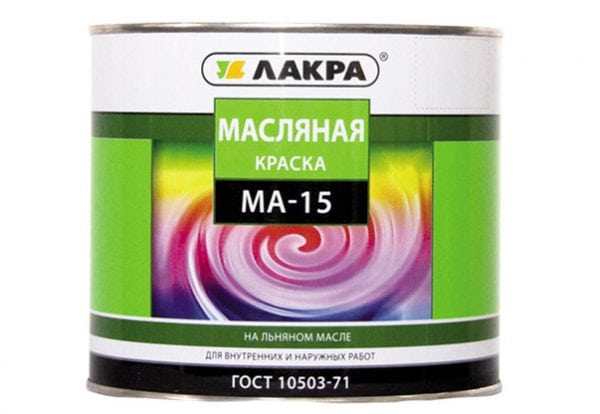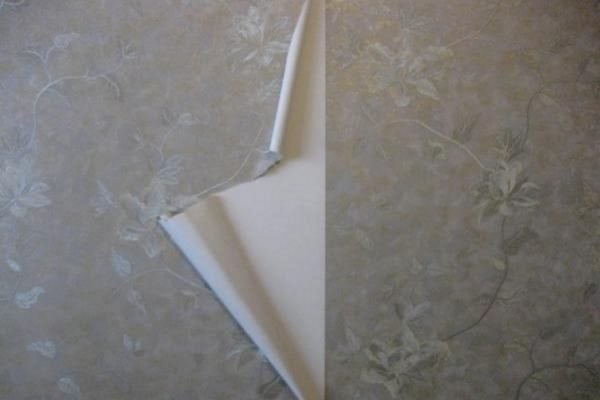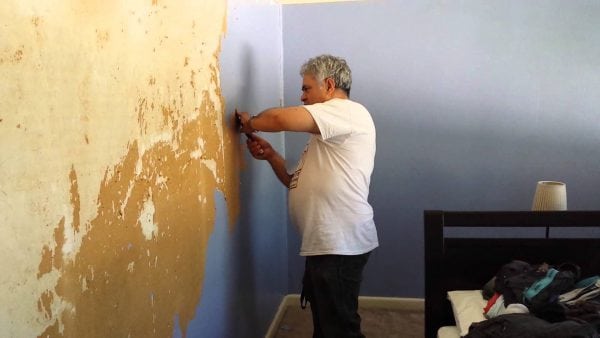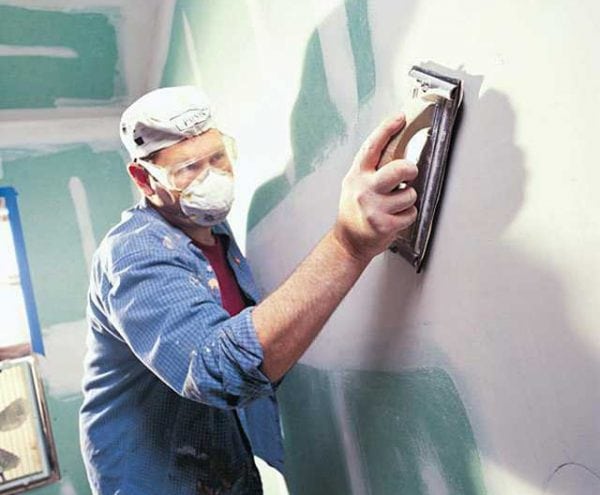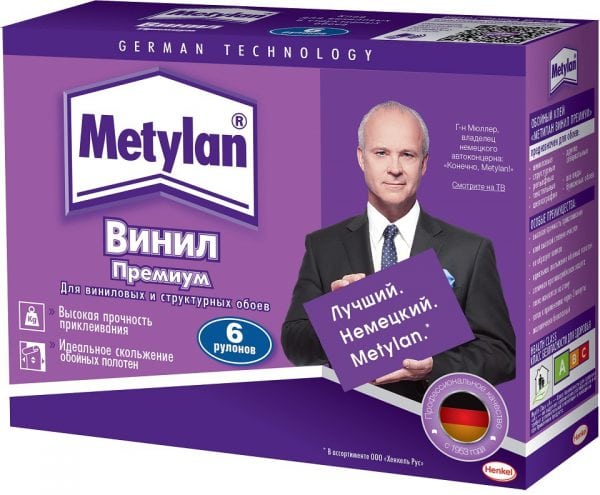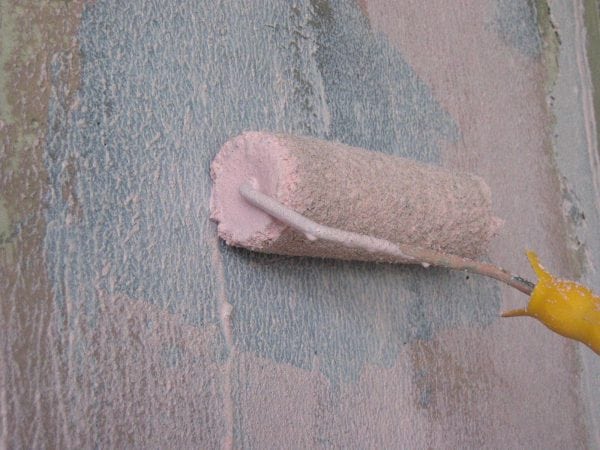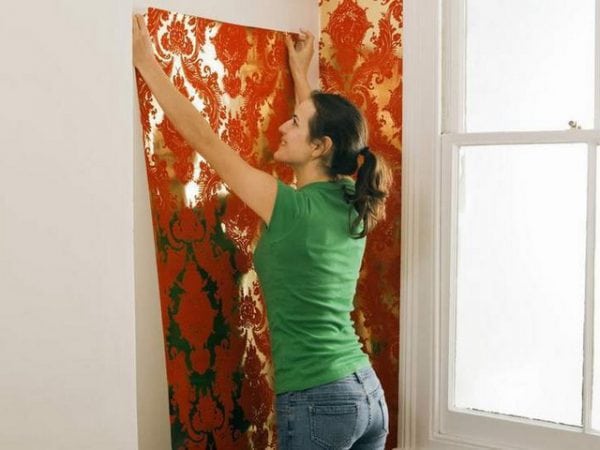In old apartments, the walls are often painted with oil paint. If repairs are to be done, wallpapering surfaces can be difficult. The adhesion quality will be low, because the adhesion of many paints with other materials is poor. How to stick wallpaper on oil paint? There are a number of tricks to avoid problems and do the job efficiently.
- Features of oil paint
- Determination of the type of coating
- Old cover
- Wall preparation
- Wall sanding
- Choosing the right glue
- Surface priming
- Wallpapering
- Wallpaper Sticker Tips
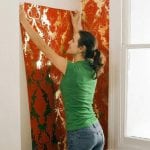
Features of oil paint
Now oil paints are used much less often than a couple of decades ago, they were replaced by more modern ones - latex, water-based, acrylic. Oil paints and varnishes are made on the basis of natural or synthetic drying oil. They are quite strong, durable over the service life, well tinted.
Sticking wallpaper directly onto a layer of oil paint has a dubious prospect. Any specialist will say that this is a violation of technology, in the process of work there will be many problems. These include the following points:
- lack of grip;
- the likelihood of quick disconnection of the paintings along with the coating;
- the appearance of spots on the finished canvas, especially if thin paper wallpapers are used.
to contents ↑Thus, it is better to get rid of the paint - spend time to remove everything without a trace. But you can still stick wallpaper on the paintwork material, a suitable method exists. It is important to conduct the correct preparation of the walls, and the result will please.
Determination of the type of coating
First you need to make sure exactly what type of coating is present on the wall. Here are the signs of different types of materials:
- Lack of gloss, dullness, surface silkiness means that it is covered with a water-based composition. It can be removed with a spatula, after soaking it well.
- Appearance of white plaque on the hand after holding along the wall is a true “symptom” of the presence of calcareous whitewash. It is impossible to stick wallpaper on it, it is important to completely remove the lime. Otherwise, after applying wallpaper glue, all the whitewash will fall off.
- Smooth, shiny, cold-to-touch walls are a sign of staining with oil or enamel compounds. They remain unchanged for a long time, do not crumble, do not fade.
Old cover
Before starting preparations, it is important to carefully inspect the walls. In some places, cracks appear on the coating, spots of stuck putty. You can’t leave them, because the wallpaper will simply tear in these places, will look uneven.
With regard to the old coating, the following work must be done:
- remove all areas that may fall off (if a significant part of the paint has been removed, it is better to remove the layer completely);
- pull out the nails, disconnect the skirting boards;
- get rid of any bulging elements.
Get rid of old paint falling off with plaster with a metal spatula, knife or other convenient tool.
to contents ↑Wall preparation
Before you stick the wallpaper, you have to carefully prepare the walls. Necessary materials for work - liquid or dry mixes for puttying, primer like concrete-contact or other deep penetration, wallpaper glue, spatulas, brushes, containers. It is not recommended to buy cheap primers, they will not give the required effect. It is also impossible to replace the above with others.
Wall sanding
Glue the finishing material is possible only after surface treatment. This is required to improve the adhesion of oil paint. The process is based on turning the wall from smooth to rough. You will need to buy an emery cloth with large grain. She needs to well handle the walls on which it is supposed to apply wallpaper glue.
After sanding the walls, putty should be putty with a building mixture containing gypsum. This is not done in all areas, but where the paint is removed. Using a spatula, the walls are leveled. Next, putty is sanded again and proceed to priming.
to contents ↑Choosing the right glue
To secure the wallpaper on the walls, it is important to buy high-quality wallpaper glue. It is recommended to purchase the tool that is designed for the most difficult wallpapers. When gluing simple, lightweight paper webs, glue is used for vinyl or non-woven materials.
Means “Methylan vinyl premium”, “Moment wallpaper extra”, “Cleo vinyl” are well suited. Also brands of wallpaper adhesives “Econ”, “Krost”, “Tekhpromsnab”, different types of bustilates proved to be quite good. If necessary, glue the material on water with PVA (1: 1) or add the latter to any wallpaper glue.
to contents ↑Surface priming
Using a primer perfectly increases the adhesion of old paint, helps to increase its absorbency. Many repairmen prefer to prime the walls with a self-prepared tool. They do it like this:
- warm water is poured into the container - 1-2 liters;
- add alabaster in small portions, immediately mix thoroughly until the mass becomes like sour cream;
- injected into the mixture of PVA - about 1 part to 3 parts of the mass, which is already in the tank;
- they priming the walls 1-3 times, between each stage they wait for complete drying.
to contents ↑Professionals are usually advised to use the “Concrete-contact” primer in difficult cases, it has excellent penetrating ability. Pre-wash the walls to remove grease, stains. Then apply the primer with a layer of less than 1 mm, allow it to dry. After priming is repeated, the walls are dried, and you can begin to fasten the paintings.
Wallpapering
After mixing the glue according to the instructions, the main process can be carried out. You can not change the ratio of glue and water - this will violate the adhesion of materials. Apply the adhesive to the canvas with a brush, roller. This rule applies to paper wallpapers. For other types of paintings, glue the wall and wallpaper strip with glue. For glass and non-woven fabrics, the composition is applied only to the wall.
The first strip is imposed from an angle closer to the window. Level the canvas so that it lies perfectly even. Beginners are recommended to pre-draw the walls - this will help to perform work without defects. Smooth the cut with a plastic spatula or rag to remove all air bubbles. Next, paste the second web, fitting end-to-end to the first. To form beautiful joints, you can use a small rubber spatula. Then they paste over all the walls in the room in a similar way.
Above and below, the edges are cut under the skirting boards with a clerical knife, previously substituting a spatula so as not to damage the walls. Cut holes for sockets, switches.
to contents ↑
Wallpaper Sticker Tips
Using a sufficient amount of compound will help reduce the risk of peeling off the paintings. If in doubt, it is better to glue both joined surfaces with glue, which will help to strengthen adhesion. You can’t open the doors in the room, open the windows, and prevent drafts from appearing during the day - so drying will happen faster.Work with high humidity in the room, at temperatures below +15 and above + 26-27 degrees, will lead to a lower quality result.
Professionals usually completely clean the walls of paint. At home, you can carry out the work with a simplified method, if you try and do a thorough preparation of the walls. Then the wallpaper will stay long and reliable.

